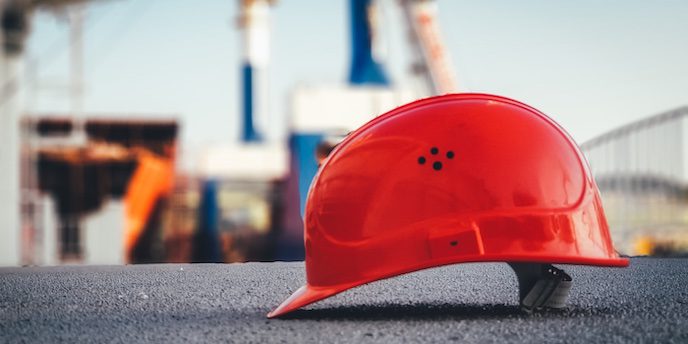Success Stories


One of the first things you notice when you’re working in Asia-Pacific-Japan is the lack of standardization across the region.
That’s not to say there are not standards. There absolutely are and, in areas, the industry is held to even higher benchmarks than those that exist in Europe and North America.
But there’s no common standard which all can adhere to. That’s perhaps not surprising as, we’re covering an area that physically starts in Australia and ends in India, traversing everything in between, with the notable exception of China. That’s doesn’t mean China doesn’t cast a huge shadow over the entire APJ or what we do. It does and we’ll return to that later.
But what it does show is that, while comparisons are inevitable, drawing parallels with Europe and North America are, though tempting, a bit meaningless. The population of APJ excluding China comes in at around 2.6 billion while Europe and North America number 746 million and 579 million respectively, according to Wikipedia.
So, where Europe has Brussels to impose regulations and standards, there’s no such supranational, legislative force in APJ. It means that on key issues like sustainability, safety and eliminating downtime, initiatives tend to happen on a nation-by-nation basis and imposing some kind of standardization across the region is quite simply, a non-starter.
If that makes APJ sound a bit like the Wild West, that would be unfair. While there is naturally variability in how countries and indeed companies address these key issues, the evidence is that they matter in a broad sense and, if we take sustainability as one example, both consumers and governments are more or less in broad agreement on the need for action and are to varying degrees implementing processes and technology that will in time change the environmental landscape.
In construction, that’s evident in the increasing adoption of green technology and, while APJ is subject to exactly the same kind of cost pressures that are pervading most of the globe currently, those very pressures are also helping spur a trend towards electrification and battery-powered vehicles and machinery that can only gather pace as the cost of oil and gas continues to rise. It’s a similar story with residential buildings where the trend towards using ever-more sustainable materials is on the rise and that means higher-quality living, less waste and a long-term more cost-effective sector.

Naturally, there are countries that lead these things. It will come as no surprise that Japan, Australia and New Zealand are in the vanguard and they all have the processes in place to ensure standards are met. But on this topic, let’s return to China.
China is a bit of a microcosm for Asia as a whole in that it sometimes gets a raw deal in the western media on the environment. It has problems of course and they should not be underestimated but when you take a glance at the China 5 initiative on emissions, a different picture emerges.
China is pushing and pushing hard on electrification and its rules on emissions are not only stringent, enforcement is rigorous with stipulations that the telemetry is up to standard. You can have legislation, but without teeth, it’s all a bit pointless. China has both and is applying both.
China’s influence on the region is of course huge and pervasive and, when it finally ends its zero tolerance policy on COVID-19, the whole APJ region is likely to benefit from the subsequent stimulus that will flow. But, we work in close proximity to a lot of Chinese OEMs — all ranked in the world’s top 50 — through the region and in other parts of the globe and we see the standards at work. They are taking sustainability seriously.
China is pushing and pushing hard on electrification and its rules on emissions are not only stringent, enforcement is rigorous with stipulations that the telemetry is up to standard. You can have legislation, but without teeth, it’s all a bit pointless.
This matters because the sheer scale of infrastructural projects taking place throughout the region in countries like Thailand, South Korea, Indonesia and Malaysia to mention but a few is staggering. We’re witnessing an energy and dynamism post-pandemic that is part state-driven, and part private-driven and if the big market ‘influencers’ like Japan, China, Australia, Korea and New Zealand are working to a high bar on sustainability, then that will pervade.
In an industry with anticipated CAGR of 8-9% per annum through to 2026, a sustainability-embedded platform will keep the pressure on, enable even better standards and see better quality throughout the region. We will see massive growth in Asia and the opportunity is there to make that growth work in harmony with a better world.
Likewise safety. It may be a stereotype to view the Japanese as having a process obsession but there’s some truth in it. On-site access and general safety checklisting requires a degree of process that way outweighs what you will typically see in Europe and North America.
What does this mean? Quite a lot I think. Telemetry service providers can help the big Japanese OEMs reduce some of the process in risk assessment on site without in anyway impacting those high standards they have set in safety.
Of course, the more we’re connected, the more that is enabled. When we opened the Singapore office in March 2021, we had something approaching 10,000 connections in the region but that’s since almost doubled to 17,000. Australia leads the way with 7,500 but we are dispersed through the region and growing. And naturally, we anticipate that proliferating as our imprint strengthens. As we do, we can certainly flavor the narrative.
Take the sustainability debate. Although there is a tendency towards pushing machines harder in APJ and extending the life cycles, IoT devices are showing where the efficiency savings can be made and where there are efficiency savings, there are cost savings and the knock-on effect of that is environmental savings as the machinery and the data coming from the machinery and telemetry devices becomes ever more sophisticated.

Take an example like Indonesia. Indonesia’s made up of circa 17,000 islands stretching between the Indian and Pacific Oceans with a population of some 275 million. Now imagine trying to service machinery in such terrain where access is difficult, extremely costly and more often than not, reliant on some form of air travel. The value of telemetry here hardly needs stating but the cost savings are considerable and giving them better alternatives. It’s a virtuous circle.
Not everything is rosy. There is a well-known tendency in APJ to make a technological ‘leap’. This can be tremendously beneficial. China as an example has been well ahead of the West in epayments fueling a growth in the digitalization of commerce that has spawned giants like Alibaba and Tencent.
In telematics, we’ve seen a similar process to leap over the smaller steps taken in Europe and North America as the technology developed with one giant stride to the latest model. That means the step-by-step familiarization with each development in more mature markets hasn’t been part of the process and that APJ users have to take on a complex data set that can initially seem daunting. When you also include the fact that a lot of the stock is not suited to the most advanced IoT devices available, there is a marrying up problem there that needs to be overcome.
In telematics, we’ve seen a similar process to leap over the smaller steps taken in Europe and North America as the technology developed with one giant stride to the latest model.
I’ve only skimmed the surface here today. There are wider issues like the impact of 5G in Australia, why India is such a big market for our machines, the implications of an ageing population across the region, the intense battle for talent as the job market heats up and even the role female engineers in India could play in changing the perceptions of gender in the industry across APJ. They’re all worthy of a blog in themselves, but in this helicopter view, I can do little more than at least hint towards topics we’ll look to cover further down the line.
This is a fascinating region. And I’m lucky to be at the heart of it. Both myself and the team throughout APJ are very much looking forward to letting you in on it as we explore further. There’s guaranteed to be a story everywhere you turn.
The author will take a deep dive into Japan for his next piece, explaining what makes the market tick, why it leads Asia’s construction sector in so many ways and what we can learn from the way it does business.
Never miss an insight. We’ll email you when new articles are published on this topic.